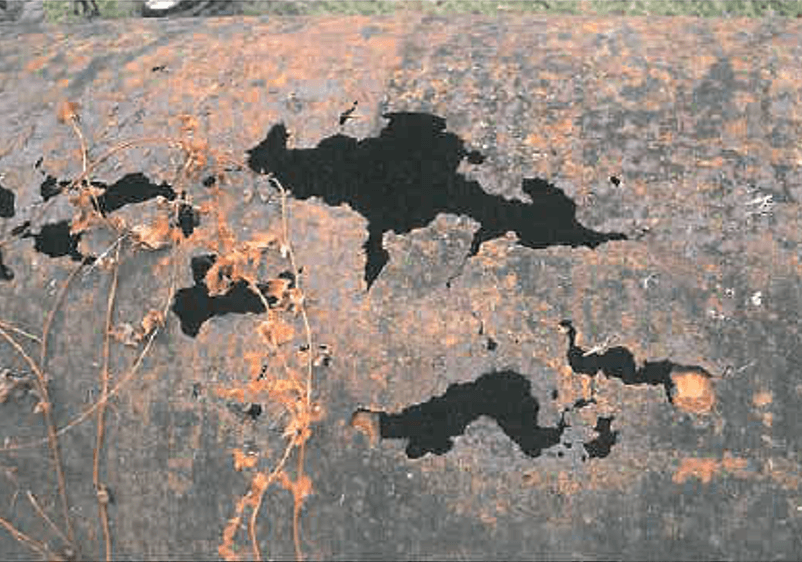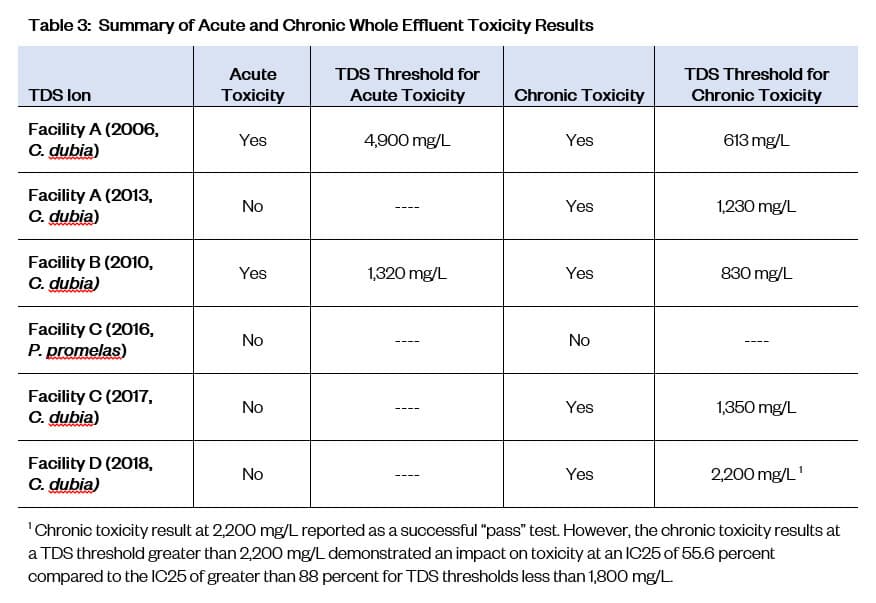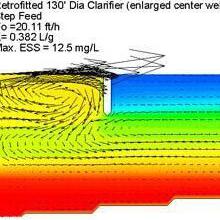Non-Traditional Approaches to Total Dissolved Solids Local Limits Development and NPDES Permit Compliance
Last Modified Feb 04, 2022
Many publicly owned treatment works (POTWs) have seen gradual increases in total dissolved solids (TDS) in wastewater treatment influent. The increases in TDS are typically associated with significant industrial use (e.g., pharmaceuticals) or non-significant industrial use, such as data centers. TDS can have significant impacts on collection system infrastructure integrity, wastewater treatment performance, and the suitability of wastewater effluent for receiving waters and reclaimed water applications. For many POTWs, an evaluation of a local limit for TDS for inclusion in a pretreatment program is a necessary response to the impacts of TDS discharged to the collection and treatment system.
Total Dissolved Solids
TDS can cause corrosion and interfere with toxicity, effluent quality, and reclaimed water programs.

This paper will present four case studies documenting the impact of TDS on local limits and the respective pretreatment programs. The case study evaluations include the impact on wastewater treatment, whole effluent toxicity in the receiving stream, and water reuse. Table 1 provides a summary of the four case studies, the range of maximum month design flows, receiving flow 7Q10 and dilution, and the type of TDS evaluation associated with each case study. The case studies highlight the differences between the maximum allowable headworks load (MAHL) for TDS for each POTW and the associated MAHL basis. Additionally, this work offers insights on the technical challenges and potential pathways of success for managing and regulating TDS in a pretreatment program.

Non-Traditional Approaches to Headworks Analysis
The Clean Water Act (CWA) National Pretreatment Regulations enable POTWs to implement local limits to control the discharge of pollutants into the collection and treatment system. Per 40 CFR 403.3(k), pass through or interference either inhibits or disrupts a POTW’s treatment processes, operation, use, or disposal or causes a violation of any NPDES permit requirement. A POTW has the authority to implement local limits tailored to site-specific factors. POTWs must design local limits based on site-specific conditions to include compliance history with NPDES permit limits (if applicable), receiving stream water quality standards (if applicable), wastewater treatment efficiency, sludge disposal, operation and maintenance (e.g. collection system and wastewater treatment facility), and worker health and safety (EPA, 2004).
A headworks analysis provides the technical basis for the establishment of the MAHL through a POTW treatment facility and collection system. In most states, water quality standards for TDS do not constitute the basis for a MAHL, but rather site-specific thresholds related to infrastructure, treatment, and effluent management. In the absence of applicable water quality standards, the impact of TDS must be assessed using non-traditional approaches to a headworks analysis to determine industrial pretreatment limits. Non-traditional approaches include a site-specific study in the receiving stream, a literature review for published TDS thresholds, a treatment process evaluation, and/or treatability studies. The TDS threshold is determined by one or more of these approaches to establish the MAHL.
Case Study Approach
The approach for evaluating the impact of TDS for all four case studies was similar. A TDS sampling plan was developed to determine the ion fractionation of TDS in the influent, effluent, industrial discharges, and the domestic contribution, if applicable. The ion fractionation was used to establish an average TDS matrix in the effluent and to ensure that the ion balance was within 5%.
A combination of non-traditional headworks analysis approaches was used to develop a MAHL for TDS for each case study. For the first approach, the TDS ion characterization was used to address the potential for corrosion, nitrification and activated sludge inhibition, settling and dewatering issues, the potential for solids precipitation, ultraviolet disinfection lamp fouling, and reclaimed water quality. Literature thresholds were used as necessary in the evaluation.
The second non-traditional headworks analysis approach was conducting acute and chronic whole effluent toxicity (WET) tests to assess the impact of increasing TDS concentrations on chronic and acute effluent toxicity. A matrix of TDS ions was developed for each POTW based on the ion characterization specific to the facility. The baseline matrix was then spiked to increase the target threshold TDS using the same ion characterization matrix as the baseline. For each case study, five spiked target TDS thresholds were used. Each WET test was conducted using the serial dilution method for each of five spiked TDS dilutions with Ceriodaphnia dubia as the test species for all four facilities. For three of the four case studies, single salt spiked chronic toxicity tests were conducted with Ceriodaphnia dubia as the test species (serial dilution) for each of three salt combinations: KCl, NaCl, and NaSO4.

Results
Table 2 provides a summary of the influent TDS ion characterization for each case study. The TDS influent characterization for Facility A and C include known industrial discharges contributing TDS to the collection system. The average influent TDS ranges from 472 mg/L to 555 mg/L, which is in the range of medium strength domestic wastewater.

Table 3 summarizes the acute and chronic WET test results for each of the four case studies. Two of the four facilities demonstrated acute toxicity with respect to TDS. All four facilities demonstrated varying thresholds of chronic toxicity with respect to TDS. In one case, Facility D passed all of the chronic tests in the spiked TDS matrix with a TDS of 2,200 mg/L. However, the chronic toxicity test at 2,200 mg/L did demonstrate an impact on toxicity at an IC25 of 55.6 percent compared to the IC25 of greater than 88 percent for TDS matrix spikes less than 1,800 mg/L.

Conclusions
Table 4 provides a summary of the impact thresholds used in the analyses that were conducted for the four case studies. Facilities A and B established a local limit for TDS based on receiving water effluent toxicity. Facility C established an informal (e.g., for internal POTW staff use) local limit threshold based on reclaimed water quality for industrial cooling tower customers. Facility D established a local limit based on anticipated treatment and settling concerns with high influent TDS and the associated impact on the reliability of the WWTP to meet stringent nutrient limits.
This paper highlights the importance of conducting evaluations on a case by case basis to establish local limits for pollutants that do not have water quality standards or inhibition thresholds available to establish a MAHL. These case studies resulted in a wide range of local limits between the four facilities depending on the influent TDS characterization (e.g., TDS ion fractionation), the matrix of dissolved carbon and other organics in the effluent, and receiving stream dilution.










